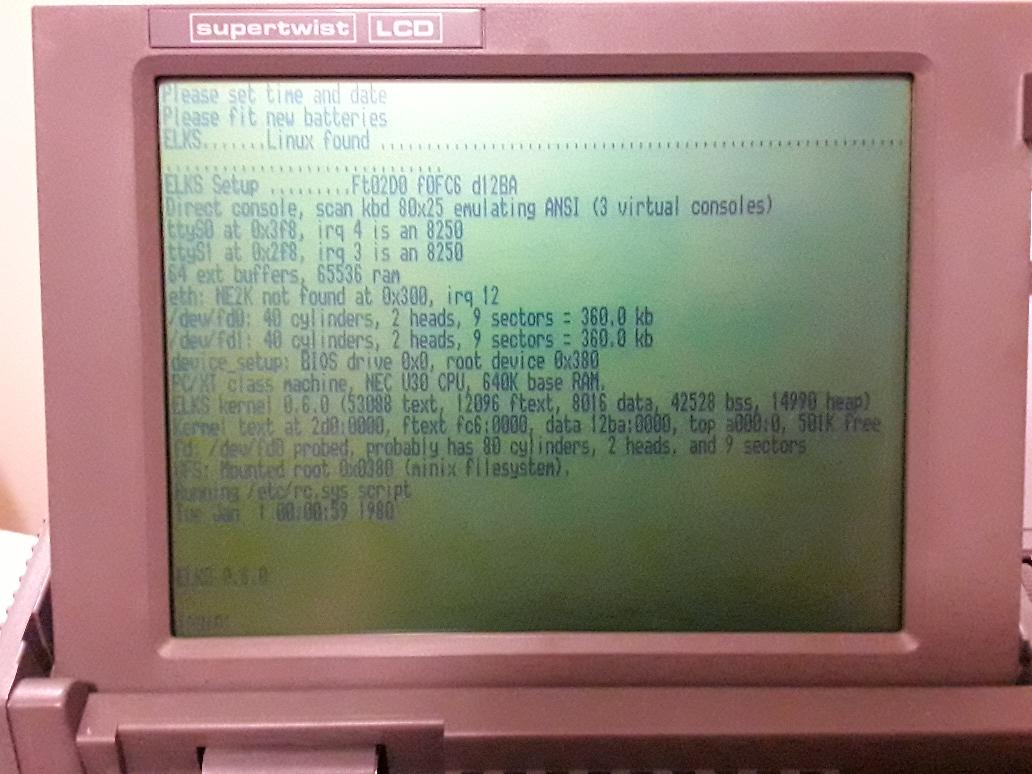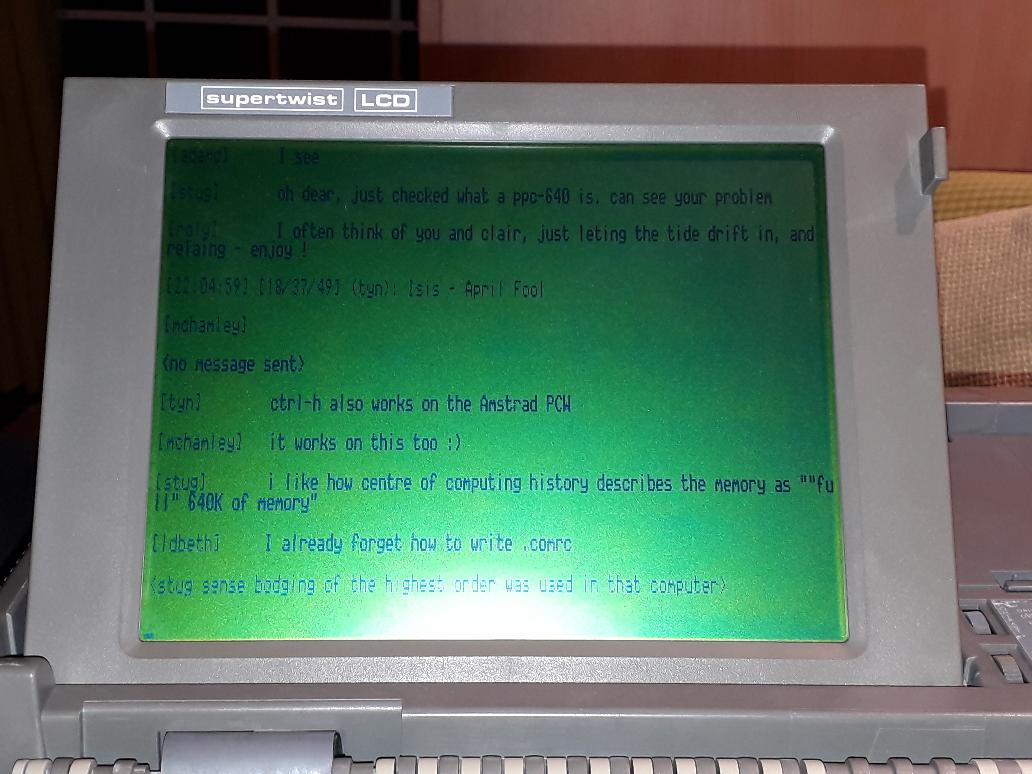
The first PPC640 is assembled from the parts of two machines. One turned up as a literal barn find, attempting to boot resulted only in POST errors about faults in the RTC and serial port. An internal inspection revealed heavy internal corrosion to the upper motherboard, it's probably not worth saving. The other was in working but heavily nicotine stained condition. I used the latter one together with the barn find PPC to build a reasonable working example by mixing and matching the better components, this even involved dismantling and cleaning both keyboards to match the less nicotine stained keys from the barn find one with the unrusted springs from the working one. The result is seen in the photo above.
I've since sold this one on the basis that noone really needs four PPCs, fortunately the buyer seems happy with it. :-)
The second PPC640 was in good clean working condition and didn't need anything to be done to it. It doesn't have nicotine staining and the only fault is cracking in the case near the handle (a common problem with these). I wrote the majority of this page with it. :-)
This one was a bit rough, but works. I've replaced the rough bits of plastic with the leftovers from PPC640D #1, so some of the colours don't match, and added a second floppy drive with one of the ones from the barnfind PPC640. The screen isn't great, there are some missing lines, but it's useable and having it working is better than it being abandoned and unloved.
This one fails to boot with a RAM error. However, I think it's the most interesting of the four as both upper and lower motherboards have differences in the copper layout compared to the other, with an added bodge wire between the two boards and also a bodge PCB added to the power supply circuitry on the lower board. There are also differences in the injection moulding of the main chassis, and even the wires for the main power switch are the other way around. I suspect therefore that this is either an early production example (most likely), or possibly even a prototype (I doubt this). As such I'm planning to trace the faulty RAM chip with a logic analyser and replace it to bring this PPC back to life.

First boot into DOS 3.30

This thing can run ELKS, a Unix-like OS using a kernel based on a subset of the Linux kernel ported to the 16 bit 8086 architecture. From power on it takes about a minute to boot from a real floppy disc.

And here it is being used on com, SDF's own chat system. :-) This is before I'd got the right settings for miniterm, hence the blank lines. While it would have been nice to try dialling in using the built in 2400 baud modem, the transatlantic calls would be fearsome. Instead I connected it to a serial terminal on a newer laptop running Linux, and from that used SSH to connect to SDF.